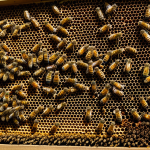Understanding Separation Anxiety in Boxers
Separation anxiety in Boxers can manifest through different behaviors, such as excessive barking, destructive actions, and even self-harm when left alone. Understanding the roots of this anxiety is pivotal in identifying early signs and implementing effective interventions.
Boxers, known for their strong attachment to their human companions, are particularly prone to separation anxiety. This breed’s intense social drive can make solo times stressful. Environmental changes, such as moving homes or alterations in daily schedules, often intensify their distress. Recognizing signs of anxiety, like pacing, drooling, and escape attempts, is crucial to prevent escalation into severe behavior issues.
Factors contributing to anxiety in Boxers often stem from their canine anxiety tendencies linked to their affectionate nature. Aiming for early recognition and intervention can set owners on the path to successful management.
To effectively mitigate Boxer behavior associated with separation anxiety, establishing a regimen of positive reinforcement and gradual desensitization is recommended. This involves rewarding calm behavior and slowly extending time away from your pet, allowing them to adjust gently. Prompt detection and response to anxiety symptoms are critical, as they can significantly enhance your Boxer’s ability to cope with separation over time.
Have you seen this : Ultimate Nutritional Handbook for Pregnant Great Danes: Tailoring Their Diet for Optimal Health
Effective Training Techniques
Understanding the most effective training methods is key when addressing separation anxiety. Positive reinforcement is one of the most recommended strategies. This involves rewarding your Boxer with treats and praise to encourage calm and independent behavior. It’s crucial to be consistent with commands and cues, which helps Boxers associate calm behavior with positive outcomes. Gradually increase the time you leave your Boxer alone, ensuring these periods start short to avoid overwhelming them.
Positive Reinforcement Strategies
Behavioral training should focus on gradual desensitization. Start with brief departures and incrementally increase leaving durations. This helps Boxers get accustomed to alone time without distress. Treats, toys, and affectionate praise during pre-departure moments also reinforce confidence and reassure the Boxer.
Crate Training for Comfort
Crates provide a safe space and encourage a sense of security for your Boxer. Introducing the crate in a positive light, with soft bedding and some of their favourite toys, creates a cozy environment. Gradually associate the crate with positive experiences, promoting comfort during your absence.
Socialization and Desensitization
Socialization is fundamental in reducing anxiety. Exposing your Boxer to new environments and short periods alone from an early age fosters adaptability. Consider engaging in controlled playdates, allowing your Boxer to develop confidence in both solitary and social settings.
Environmental Enrichment Ideas
Engaging your Boxer through environment stimulation can significantly reduce separation anxiety by keeping their minds active. Selecting the right interactive toys not only encourages play but also promotes mental engagement which is crucial for preventing boredom.
Appropriate toys are vital for maintaining a stimulating environment. Puzzle feeders or treat-dispensing toys are excellent choices, as they require your dog to figure out how to release the treats, thus mentally challenging them. These toys can provide hours of entertainment and distraction, especially during your absence, helping alleviate anxiety by focusing their attention on problem-solving tasks.
Additionally, rotating different toys regularly can keep your Boxer entertained and prevent monotony. Ensure the environment is enriched not just by toys but also by incorporating different textures, scents, and obstacles that emulate a more natural setting. This variety is essential to maintain their interest and simulate exploration, which Boxers naturally enjoy.
By integrating such enriching elements into their surroundings, you can create a holistic experience that not only entertains but also calms your Boxer, turning solo time into less of an ordeal and more of an opportunity for discovery and fun.
Utilizing Calming Products
Utilizing calming solutions can be an effective strategy to address separation anxiety in Boxers. These products and methods aim to provide anxiety relief by creating a soothing environment for your pet.
Natural Calming Aids
Herbal remedies and supplements are often considered first-line natural calming aids. Products containing chamomile, valerian root, and other botanicals may provide relief, although their efficacy can vary. Pheromones, available as diffusers or sprays, mimic natural calming signals, potentially reducing anxiety levels. Consultation with a veterinarian is crucial before introducing these products to ensure the appropriate use and safety.
Comfort Items
Incorporating comfort items can ease tension. Familiar blankets or pieces of your clothing, carrying your scent, can help comfort your Boxer during absences. Additionally, calming music or white noise can be soothing, providing an auditory backdrop that mimics companionship. Anxiety wraps or snug jackets can apply gentle pressure, providing physical comfort akin to a hug.
By integrating these pet products, owners can offer a supportive environment that mitigates separation anxiety symptoms, promoting tranquility. However, it’s important to monitor your Boxer’s response to adjust the approach as needed, ensuring they continue to feel secure and comfortable.
Expert Insights and Case Studies
Understanding separation anxiety in Boxers requires exploring expert advice and case studies. Successful methods from experts involve a blend of positive reinforcement and routine adjustments. A notable success story involves a Boxer named Max, who improved through gradual exposure to solo playtimes, showcasing the power of continuous adaptation.
Case studies highlight various strategies tailored to individual Boxers, reflecting their unique emotional needs. For instance, integrating specially designed calming products and interactive toys led to significant anxiety reduction in many cases, emphasizing the value of individualized interventions.
Insights from dog trainers and veterinarians reveal that consistent scheduling and environmental enrichment stand as cornerstones in managing anxiety. Over time, these approaches reinforce a Boxer’s confidence in facing solitary moments.
Experts advocate for ongoing support and regular behavior monitoring. Observations suggest that methods such as increasing mental engagement and providing comforting items enhance a Boxer’s ability to cope. In cases where anxiety persists, consulting with professionals can offer fresh perspectives on mitigating anxieties effectively.
Through these refined strategies, Boxers can transition from anxious behaviors to a state of calm, ensuring a balanced emotional life integrated with their loving households.
Creating a Supportive Routine
Establishing a consistent daily routine is crucial for managing Boxer behavior related to separation anxiety. By aligning their schedule with regular activities, you create a sense of predictability and security. A well-balanced routine, incorporating exercise and mental engagement, can significantly reduce the stress associated with change or solitude.
Encourage physical exercise and mental stimulation before departures. This proactive approach helps expend excess energy and lowers anxiety levels, as a tired Boxer is more likely to be relaxed. Activities like walks, interactive play, or even brief training sessions can be effective.
Gradual departures are vital in fostering a comforting environment. Starting with short periods away and gradually increasing the time helps your Boxer slowly adjust to being alone. During these times, consistency is key, ensuring your Boxer’s needs are always met.
Additionally, establishing a pre-departure ritual can further ease anxiety. Simple actions, such as calmly putting on shoes or picking up keys without rushing, signal routine rather than an imminent prolonged absence. This preparation aids in creating an environment where your Boxer feels at ease, even when alone. By structuring a supportive routine, you lay down a foundation for your Boxer’s overall well-being.
Monitoring Progress and Adjusting Techniques
Creating an effective plan to combat separation anxiety in Boxers requires keen behavior monitoring. Regularly observing your pet’s reactions helps gauge the success of implemented strategies. This can involve maintaining a detailed log of your Boxer’s responses to different training methods. Note any Boxer behavior shifts, whether it be an eagerness for alone time or signs of anxiety. Precise documentation of these changes over time provides insight into the effectiveness of your interventions.
As you track progress, remain flexible with your adjustment strategies. Tailor your approach based on your Boxer’s unique needs and behavioral cues. For instance, if certain calming solutions show minimal effect, consider experimenting with different techniques or increasing the exposure duration gradually.
Continuous ongoing support is crucial; don’t hesitate to engage with animal behaviorists or veterinarians if uncertainties arise. Professional guidance can offer fresh perspectives, suggesting alternative interventions or confirming the current path’s suitability. Ensuring you have a robust, adaptable plan in place not only improves your Boxer’s anxiety levels but also enhances their overall well-being, illustrating the importance of a strategic and well-monitored approach.









